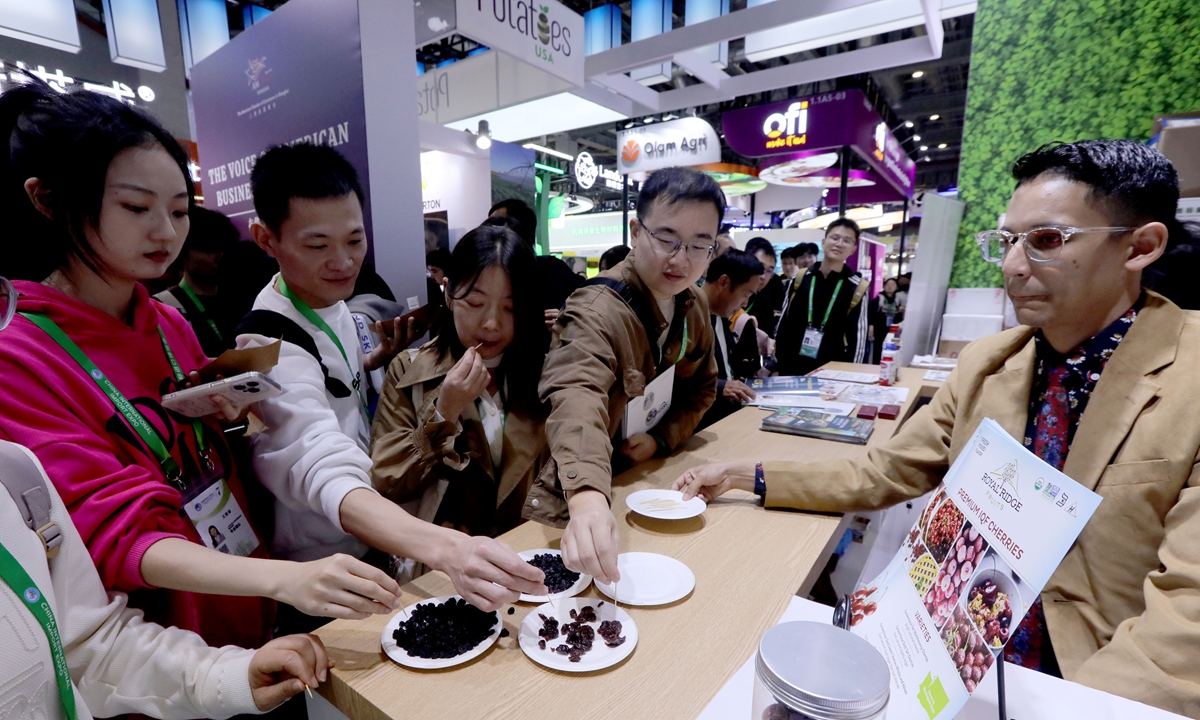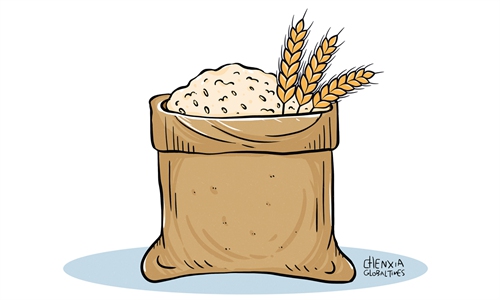GT Voice: Agricultural orders show potential, complementarity of China-US trade cooperation

Visitors taste dried cherries at an exhibition booth in the American Food and Agriculture Pavilion at the 7th China International Import Expo on November 8, 2024. The pavilion has an exhibition area of 240 square meters, showcasing various agricultural products from multiple US companies and organizations. Photo: Chen Xia/GT
Amid the complexities and uncertainties surrounding trade relations between China and the US, robust and resilient cooperation in the agricultural trade sector provides hope for all those concerned with the economic interactions between the two nations.The exhibitors at the American Food and Agriculture Pavilion during the six-day China International Import Expo (CIIE) signed 11 deals with a total value of $711 million, up 41 percent compared with last year's total, according to a statement issued on Sunday by the American Chamber of Commerce in Shanghai.
The promotion focus of the American Food and Agriculture Pavilion was small and medium-sized American companies that were unable to come to China to participate in the CIIE, and the transaction amounts achieved by well-known American agricultural product traders such as ADM and Bunge during the expo will far exceed the figure, Eric Zheng, president of AmCham Shanghai, said at a press conference on Sunday.
The gains of American agricultural companies at the CIIE underscore the vast potential and open attitude of the Chinese market while highlighting the complementarity and cooperation space between China and the US in the agricultural sector.
As one of the largest agricultural consumers in the world, China boasts a vast and diverse market. With rising living standards and evolving consumption patterns, Chinese consumers are increasingly seeking high-quality agricultural products.
As a leading agricultural power, the US offers strong competitiveness in terms of quality, variety and the pricing of its agricultural goods. Consequently, collaboration between China and the US in the agricultural sector aligns with the economic interests of both sides.
In particular, in the soybean trade sector, there is ample room for cooperation. According to the 2024 Agricultural Outlook Report released by the US Department of Agriculture in February, US soybean exports are expected to reach 58.1 million tons by the 2033/34 year, an increase of 10.9 percent compared with the 2024/25 year.
Meanwhile, China's soybean imports are projected to continue growing over the next decade, rising from 104.1 million tons to 138.3 million tons, according to Chinese media reports.
For a long time, agriculture has served as a traditional stabilizing force in China-US economic and trade relations, playing a crucial role in their economic cooperation. In recent years, despite fluctuations in trade relations between the two countries, the growth of agricultural product deals during the CIIE has provided significant stability for their economic ties. This underscores China's status as a key buyer of US agricultural products and highlights the ongoing evolution of cooperation and exchanges in the agricultural sector between the two nations.
In recent years, China has been broadening its agricultural product imports and diversifying its sources by increasing imports from various countries. Nevertheless, China remains a major overseas market for US agricultural products, a fact that underscores the stability of this trade relationship. This enduring partnership offers valuable certainty for China-US economic and trade cooperation, which both nations should cherish and work to strengthen.
However, despite the positive signals that come from agricultural trade, there is no denying that the challenges and uncertainties that permeate China-US trade relations cannot be simply overlooked. While enjoying the dividends of cooperation, both countries need to face these challenges together.
China is willing to promote bilateral trade toward a more balanced and sustainable direction. But fundamentally, the healthy development of China-US economic and trade relations hinges on joint efforts.
This is also why it is necessary for both sides to recognize that trade cannot be weaponized for political containment or unilateral suppression. The essence of trade lies in mutual benefit and win-win outcomes.
Only by promoting trade in a manner that is grounded in the principles of equality and mutual respect can the two countries pave the way for shared prosperity and common development.




